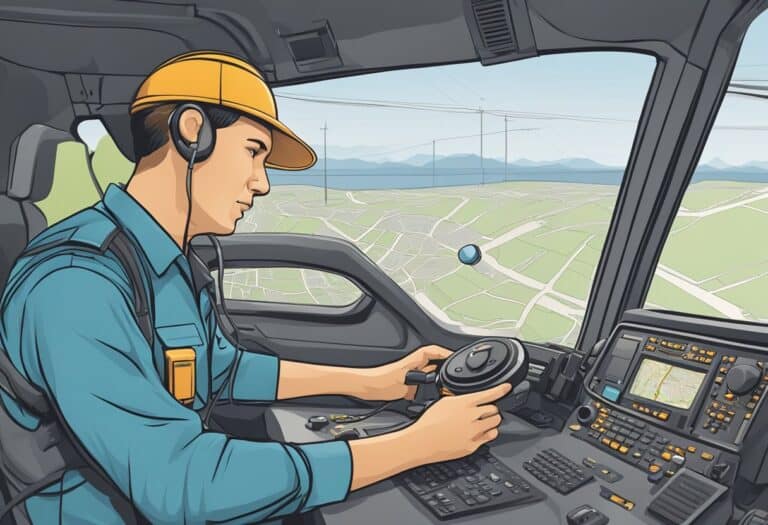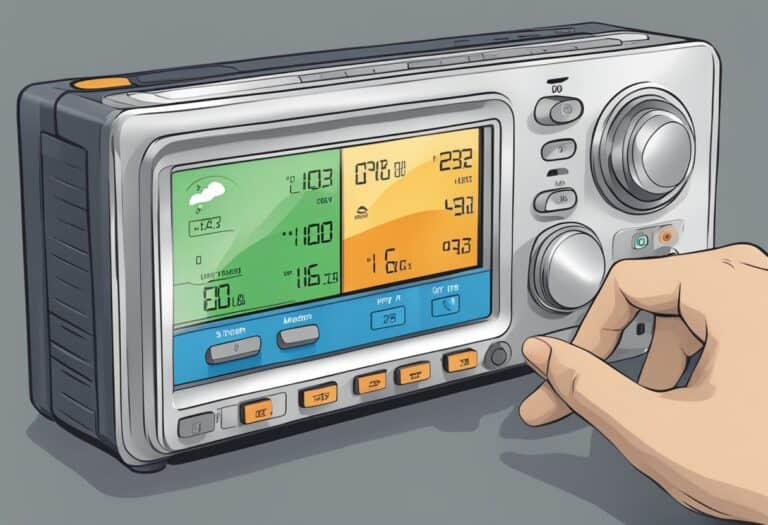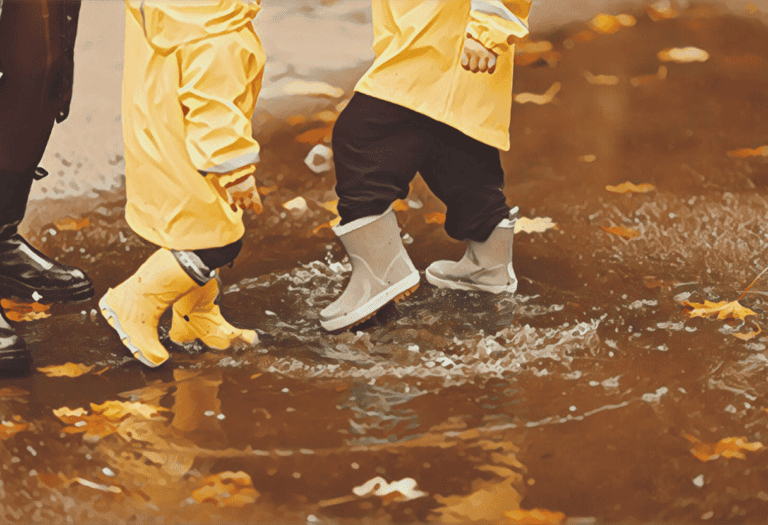The water cycle is a fundamental process that governs the distribution and movement of water around the planet, influencing both weather and climate significantly.
It encompasses various stages including evaporation, condensation, precipitation, and collection. When the sun heats bodies of water, the water evaporates into the atmosphere, subsequently cooling to form clouds through condensation. These clouds can move over large distances and, when conditions are right, they release water as precipitation. This precipitation is not just responsible for the day-to-day weather patterns we experience but also has long-term effects on the global climate.
In the grand scheme of climate, the water cycle contributes to heat distribution across the globe. As water vapor rises, it carries heat with it into the atmosphere, which can then be released in other areas during condensation and precipitation, effectively transferring heat energy from one place to another. Thus, this continuous movement of water and energy has a profound effect on the temperatures and weather that characterize different regions of the world.
As climate patterns shift due to various factors, including human activities, the behavior of the water cycle responds accordingly, leading to changes in weather patterns and potentially contributing to extreme weather events.
The water cycle, involving evaporation, condensation, and precipitation, redistributes heat and moisture globally, influencing weather patterns and climate. Changes in the cycle can lead to extreme weather and climate shifts.
Fundamentals of the Water Cycle
The water cycle is a continuous process that redistributes water throughout the Earth’s atmosphere and surface, driving the weather patterns and climate changes you experience. Understanding the water cycle is fundamental to grasping how water moves through the Earth’s system.
Evaporation is where the journey begins—as the sun heats bodies of water, water vapor rises into the atmosphere. Think of this as the water cycle’s engine, powered by solar energy.
Condensation follows, as the water vapor cools and transforms into clouds. This phase is crucial as it sets the stage for precipitation—when water falls back to the Earth in the form of rain, snow, or hail.
Runoff and infiltration occur post-precipitation, when the water either flows over the land’s surface or seeps into the soil, replenishing groundwater reserves. You likely witness runoff after a rainstorm when water accumulates in rivers or lakes.
- Evapotranspiration is a combination of evaporation and plant transpiration, further returning moisture to the atmosphere.
Lastly, groundwater flow, the subterranean component of the cycle, involves the slow movement of water underground. This process can take years, but it’s essential in maintaining the balance of aquatic ecosystems.
Remember, the energy that fuels this cycle comes from the Sun, driving evaporation, while the Earth’s gravity pulls water back down during precipitation. Your understanding of these fundamentals allows you to recognize the dynamic system that impacts your daily weather and long-term climate.
Water Cycle Processes and States
The water cycle, integral to both weather and climate, involves water in its various states: gas, liquid, and solid. Understanding how these states transition through different processes is key to comprehending the cycle’s influence on the environment.
Evaporation and Transpiration
When heat from the sun energizes liquid water, it transforms into vapor, a process known as evaporation. This water vapor then enters the atmosphere, carrying with it moisture that will later form clouds and precipitation. Not all vapor comes from lakes and oceans; plants also contribute through transpiration, releasing water vapor during photosynthesis.
Condensation and Cloud Formation
As the vapor rises, it encounters cooler temperatures in the atmosphere. The drop in temperature causes the vapor to change back into liquid water, in a process known as condensation. These tiny water droplets cluster together to form clouds, which are pivotal in the distribution of heat and moisture across the globe.
Precipitation Types
The water stored in clouds eventually falls back to Earth as precipitation. Depending on the temperature and atmospheric conditions, you experience it as rain, snow, or other forms such as sleet or hail. Rain replenishes liquid water in bodies of water, whereas snow and ice can accumulate, temporarily storing water in frozen form.
Sublimation and Deposition
Sublimation and deposition are less common but vital processes. Sublimation occurs when frozen water in the form of ice or snow changes directly to vapor without becoming liquid first. Conversely, deposition is the direct transformation from vapor to solid, forming frost. These processes are especially relevant in understanding the exchange of water in polar regions and high mountains.
Remember, these transitions contribute to weather patterns and phenomena such as global temperatures, droughts, and floods by regulating the amount of water and heat in the atmosphere.
Interactions with Climate

The water cycle’s dynamics are closely intertwined with the earth’s climate, influencing everything from local temperature patterns to global climate trends. Your understanding of weather and climate must consider these critical interactions.
Climate Change and Water Cycle
Climate change is inducing significant alterations in the global water cycle, affecting how you experience weather and climate. As global temperatures rise, the atmosphere’s ability to hold moisture increases, leading to changes in precipitation patterns. Some regions may experience intensified droughts, while others may face increased flooding risks. This variability can directly affect soil moisture and fresh water availability, which are crucial for maintaining healthy ecosystems and water resources.
- Rising temperatures impact evaporation and precipitation rates.
- Disrupted patterns lead to uneven distribution of water resources.
Extreme Weather Events Impact
Your environment is increasingly susceptible to extreme weather events driven by the changing water cycle. The increased temperature and moisture in the atmosphere contribute to the occurrence and severity of events such as hurricanes, heavy downpours, and blizzards. Additionally, climate variability can exacerbate the frequency of these events, challenging your environment and infrastructure resilience.
- Droughts: Prolonged dry periods affect water supply and agriculture.
- Flooding: Sudden and intense rainfall can overwhelm drainage systems.
By understanding these connections, you become better equipped to anticipate and respond to the challenges posed by the ever-evolving climate.
Water Storage and Movement
In exploring how the water cycle impacts weather and climate, it’s essential to recognize the roles of water storage and movement. These processes dictate the distribution and availability of water across different parts of the Earth and ultimately influence climate patterns.
Surface and Groundwater Storage
Your understanding of surface water storage involves recognizing that lakes, reservoirs, and wetlands act as temporary holding areas for water. These bodies contribute to evaporation, thus feeding water vapor into the atmosphere, which in turn plays a crucial role in weather development. Groundwater storage, on the other hand, involves aquifers and soil moisture. It represents a slower, but a vast component of the water cycle, with springs and groundwater flow serving as critical sources that maintain river and streamflow levels, especially during dry periods. Groundwater significantly influences water quality and availability for ecosystems and human use.
Rivers, Lakes, and Oceans Circulation
The circulation of rivers, lakes, and oceans is integral to weather and climate. These bodies of water are responsible for the transport and distribution of heat and moisture around the globe. Ocean currents transfer warm and cold water across vast distances, affecting regional climates. For example, the Gulf Stream carries warm water from the Gulf of Mexico towards Europe, contributing to milder winters. Similarly, streams and rivers facilitate the movement of surface runoff, which includes snowmelt and rainwater. This movement redistributes water, impacts aquatic ecosystems, and can influence the occurrence of weather phenomena like storms and floods.
Ecological and Human Impacts
The water cycle is integral to the survival and development of life on Earth. It affects vast ecological systems, influencing the distribution and quality of fresh water resources, and has a direct impact on human health and socioeconomic development.
Water Cycle and Ecosystems
Water is the lifeblood of ecosystems, serving as a crucial component for photosynthesis, nutrient distribution, and the structural support of vegetation. Wetlands and their surrounding lands rely on the natural dynamics of water cycle processes such as precipitation, evaporation, and percolation to maintain their unique soil characteristics and support the diverse life they harbor. This continual movement of water carries essential nutrients across land surfaces, helping to sustain life.
Your local environment, from the smallest creeks to the vast forests, is shaped by the availability of water. Changes in the water cycle can alter the balance of ecological systems, potentially leading to reduced biodiversity or the transformation of landscapes. For example, consistent water availability promotes healthy soils which are fundamental for robust plant growth and the wider food webs they support.
Human Health and Development
Your health and the development of your community are deeply intertwined with the stability of the water cycle. Water resources are vital for agriculture, industry, and domestic use, all of which have direct implications for human health. Any changes in the availability and quality of fresh water can lead to significant impacts on food security, economic growth, and the well-being of your community.
Development initiatives often necessitate large-scale alterations to the water cycle, including the construction of infrastructure like dams and irrigation systems. While these developments can provide essential water resources for human use, they can also disrupt natural water flow, impact ecological systems, and reduce the percolation necessary to replenish underground aquifers. This can ultimately lead to a scarcity of fresh water, not only affecting human life but also the various forms of life relying on these water resources.
Proper management and an understanding of the water cycle are critical to minimizing negative impacts and ensuring the continuous provision of water for sustaining life and fostering development. You play a role in this cycle, and your actions contribute to the overarching health of your environment and your community.
Scientific Understanding and Measurement
Your grasp of weather and climate is intricately linked to the water cycle. Precise measurements and advanced models are vital tools that allow you to understand the shifting patterns of precipitation and their impact on land and sea.
Modeling the Water Cycle
Models provide you with comprehensive simulations of the Earth’s water cycle and its variables. They integrate various components like temperature, precipitation patterns, and surface density to predict changes in climate. By observing mudcracks on Earth’s surface, models can infer historical climate data, giving you a clearer picture of water cycle dynamics across different landscapes. These models are continuously refined with new data to enhance their accuracy.
NOAA and Global Measurements
The National Oceanic and Atmospheric Administration (NOAA) spearheads efforts to monitor and measure the water cycle globally. Through satellites and an array of sensors, NOAA collects essential data on aspects like atmospheric moisture, ocean salinity, and regional precipitation patterns. This information is critical to understanding how the water cycle interacts with weather systems and influences climate on a wider scale. Your awareness of NOAA’s global measurements can help you appreciate the precision needed to study changes over Earth’s surface, including those affecting your immediate environment.
Frequently Asked Questions
In this section, we explore how various aspects of the water cycle interact with weather and climate, addressing frequently asked questions with precise and informed answers.
What is the impact of condensation on weather patterns?
Condensation, the process by which water vapor becomes liquid, is critical in forming clouds, which are significant players in weather patterns. Cloud cover can lead to precipitation and influence local temperatures, with extensive cloud cover often leading to cooler temperatures during the day and warmer temperatures at night.
In what ways do ocean currents influence regional climate conditions?
Ocean currents transport warm and cold water across the globe, significantly affecting regional climate conditions. For instance, the Gulf Stream carries warm water from the Gulf of Mexico to the North Atlantic, moderating the climate of nearby coastal regions by warming the air in these areas.
How does evaporation contribute to weather formation?
Evaporation, the transition of water from liquid to vapor, provides the atmosphere with moisture that eventually forms clouds and leads to weather phenomena like rain and storms. This moisture feeding into the atmosphere is a key component in the development of weather patterns and precipitation events.
Can extended periods of high temperatures alter the water cycle, and what would be the consequences for weather and climate?
Persistent high temperatures can accelerate evaporation rates, leading to a more intense water cycle. This increased activity can result in more extreme weather events, such as heavy rainfall and droughts, impacting the global balance of ecosystems and climate patterns.
What role does the water cycle play in the distribution and regulation of climate zones?
The water cycle is instrumental in distributing heat through evaporation and precipitation, which helps regulate climate zones. This heat distribution contributes to the establishment of different climates around the world, from tropical to polar, defining the nature of local ecosystems and weather.
What are the environmental implications of disruptions to the natural water cycle?
Disruptions to the water cycle, such as those caused by deforestation or global warming, can have pronounced environmental implications. These disruptions can alter precipitation patterns and the frequency of extreme weather events, affecting biodiversity, agriculture, freshwater availability, and ultimately human societies.







